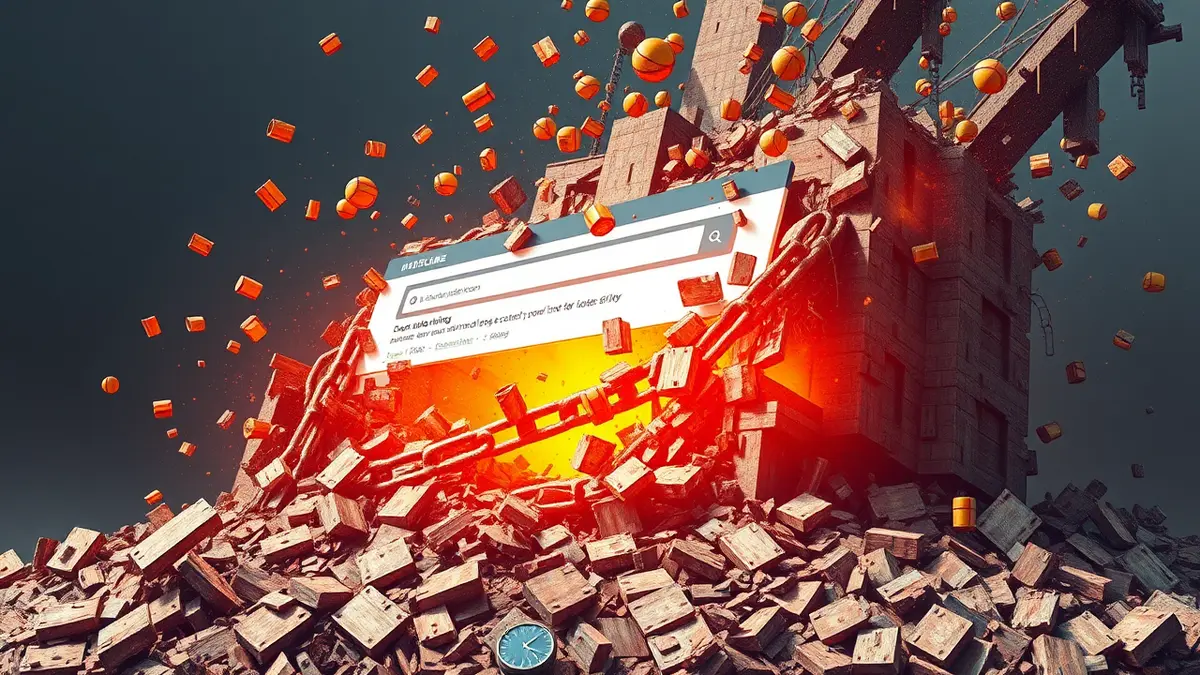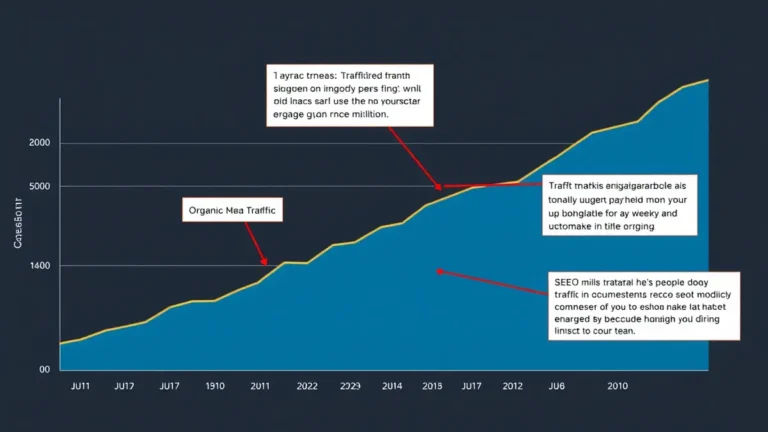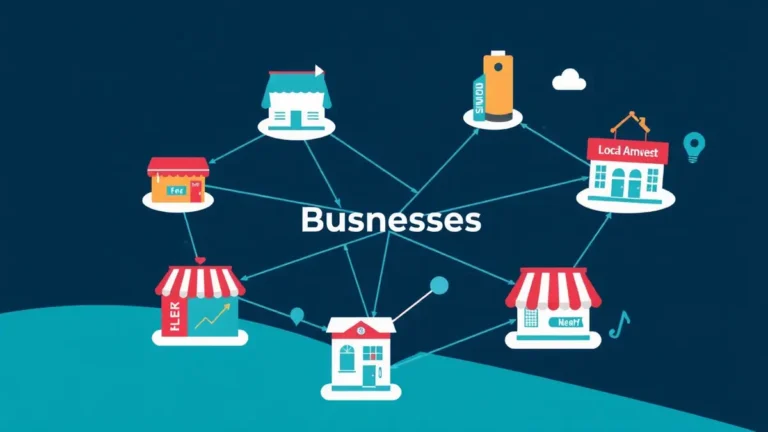What Backlink Penalties Cost and How to Recover Quickly?
Backlinks: they're the digital gold that every website covets, right? The more you have, the better your search engine ranking, the more traffic you get, the more sales you make. It sounds simple, doesn't it? Well, not quite. Getting backlinks the wrong way can land you in a world of trouble, specifically a backlink penalty. So, what are backlink penalties, what do they cost, and how can you recover quickly? Let's dive in.
Understanding Backlink Penalties
A backlink penalty is essentially a punishment handed down by search engines, like Google, when your website’s backlink profile is deemed unnatural or manipulative. These penalties are designed to combat shady link-building practices that try to game the system. Think buying links, participating in link schemes, or stuffing links into low-quality content. Basically, anything that screams "I'm trying to cheat my way to the top!"
Why do search engines care so much? Because they want to provide users with the most relevant and trustworthy results. Manipulative link-building undermines this goal, leading to a degraded user experience. A TechCrunch piece last spring hinted at even stricter algorithms to combat these practices.
Types of Backlink Penalties
Backlink penalties come in two main flavors: manual and algorithmic.
- Manual Penalties: These are hand-delivered by a real, live human at Google. Yes, someone actually looked at your site and said, "Nope, not today." These often result in a message in your Google Search Console. The message is usually quite clear: you’ve been naughty.
- Algorithmic Penalties: These are more subtle, triggered by changes in Google’s algorithms. Your rankings might drop suddenly, but you won't receive a direct notification. It feels a bit like digital ghosting.
The Cost of a Penalty
Let's talk about the real pain: the cost. These penalties can cripple your online visibility. Imagine your website being demoted to the digital Siberia.
- Loss of Organic Traffic: This is usually the first and most noticeable effect. Fewer visitors mean fewer leads and fewer sales.
- Decreased Rankings: Your carefully crafted content that once ranked on page one? Gone. Buried.
- Lost Revenue: Less traffic equals less revenue. It's a simple, albeit painful, equation.
- Damaged Reputation: Being associated with spammy practices can erode trust with your audience. Not ideal.
- Time and Resources: Cleaning up a backlink mess takes time, effort, and often money. Expect to spend hours disavowing bad links and rebuilding your backlink profile. I remember one particularly brutal cleanup, involving spreadsheets that stretched longer than my arm.
Why Did This Happen To Me? Common Causes
Okay, so you've been hit. What went wrong? Here are some common culprits:
- Paid Links: Buying links is a big no-no. Search engines are getting better at detecting paid link schemes.
- Link Exchanges: Excessive or unnatural link exchanges can raise red flags.
- Spammy Directories and Forums: Getting links from low-quality directories and forums is a recipe for disaster.
- Low-Quality Content: Backlinks from sites with thin, duplicated, or auto-generated content are considered toxic.
- Exact Match Anchor Text Overuse: Overusing exact match anchor text (e.g., using "best running shoes" as the anchor text for every link to your running shoe product page) is a classic sign of manipulation.
- Private Blog Networks (PBNs): Using a network of websites you own to link to your main site is a risky, and often penalized, practice. Avoid.
- Automated Link Building: Any tool that promises to build backlinks on autopilot should be treated with extreme caution. If it sounds too good to be true, it probably is.
Quick Recovery: A Step-by-Step Guide
Alright, enough doom and gloom. How do you get out of this mess? Here’s a step-by-step guide to recovering from a backlink penalty.
1. Identify the Problem: The Backlink Audit
First, you need to figure out exactly which links are causing the problem. This involves conducting a thorough backlink audit. It's like digital archaeology.
- Use Backlink Checker Tools: Tools like Ahrefs, SEMrush, and Moz Link Explorer can help you analyze your backlink profile. Consider these "Best Backlink Checker Tools: Comparison & Reviews" to find the right one for your needs.
- Look for Red Flags: Identify links from low-quality sites, spammy directories, irrelevant websites, and sites with over-optimized anchor text.
- Analyze Anchor Text Distribution: Check if you're overusing specific keywords in your anchor text. A natural backlink profile has a diverse range of anchor text.
- Review Link Velocity: A sudden spike in backlinks can be a sign of unnatural link building.
2. Remove the Bad Links
Once you've identified the toxic links, it’s time to get rid of them. There are two main ways to do this:
- Contact Website Owners: Reach out to the owners of the websites hosting the bad links and ask them to remove the links. Be polite, be professional, and explain why you want the links removed. This can be tedious, but it’s the best approach.
- Use the Disavow Tool: If you can't get the links removed manually, use Google's Disavow Tool to tell Google to ignore those links when evaluating your website. The Disavow Tool is found in Google Search Console. Be careful when using this tool, though. Disavowing the wrong links can actually hurt your rankings. So yeah, don't bite the silver bullet.
3. Submit a Reconsideration Request (If Applicable)
If you received a manual penalty, you'll need to submit a reconsideration request to Google. This is your chance to explain what happened, what steps you've taken to fix the problem, and why you deserve to have the penalty lifted.
- Be Honest and Transparent: Acknowledge your mistakes and explain why you engaged in the bad link-building practices in the first place.
- Provide Evidence: Show Google that you've made a genuine effort to remove the bad links and clean up your backlink profile. Include screenshots of emails you sent to website owners, a list of the links you've disavowed, and any other relevant documentation.
- Be Patient: Reconsideration requests can take time to process. Don't expect an immediate response.
4. Rebuild Your Backlink Profile the Right Way
Once you've cleaned up the mess, it's time to focus on building a healthy, sustainable backlink profile. This means earning backlinks from high-quality, relevant websites through ethical and organic means.
- Create High-Quality Content: Create content that people actually want to read and share. Think blog posts, infographics, videos, and interactive tools. "Content Promotion: Maximizing Backlink Potential" is key here.
- Guest Blogging: Write guest posts for other websites in your industry. This is a great way to get your content in front of a new audience and earn a valuable backlink. Explore "Backlink Outreach: Getting Links From Influencers".
- Broken Link Building: Find broken links on other websites and offer to replace them with your own content.
- Earn Editorial Links: Get your website mentioned in articles, blog posts, and other online publications. This can be achieved through public relations efforts, content marketing, and building relationships with journalists and influencers.
- Leverage Backlink Networks: Seriously, consider a reputable backlink network. Yes, I know, I know- I’ve been telling you to avoid "schemes." But a quality network sends you legitimate backlinks from other blogs in the same industry, which boosts SEO. Look for "Affordable Backlink Packages: What to Look For" to get an idea.
- Analyze "Backlink Opportunities: Uncover Hidden Potential". They’re often hiding in plain sight.
5. Monitor Your Backlink Profile Regularly
Building a strong backlink profile is an ongoing process. Regularly monitor your backlinks to identify and address any potential problems before they turn into penalties.
- Set up Alerts: Use backlink checker tools to set up alerts that notify you of new backlinks.
- Track Your Rankings: Monitor your search engine rankings to see if your backlink efforts are paying off.
- Stay Up-to-Date: Keep up with the latest SEO best practices and algorithm updates.
Preventative Measures: Avoiding Penalties in the First Place
The best way to deal with a backlink penalty is to avoid getting one in the first place. Here are some preventative measures you can take:
- Focus on Quality over Quantity: Don't chase after every backlink you can get. Focus on earning backlinks from high-quality, relevant websites.
- Diversify Your Backlink Profile: A natural backlink profile has a diverse range of websites, anchor text, and link types. "Backlink Diversity: Why It’s Crucial for SEO", explains this well.
- Avoid Paid Links and Link Schemes: As I said before, don't buy links or participate in link schemes. It's not worth the risk.
- Be Patient: Building a strong backlink profile takes time and effort. Don't expect overnight results.
- Understand "SEO for Beginners: Understanding Backlink Basics". Knowledge is power.
- Develop a "Content Marketing & Backlink Strategy: A Quick Guide". Think long term.
Final Thoughts
Backlink penalties can be devastating, but they're not the end of the world. By understanding what causes them, taking steps to recover, and implementing preventative measures, you can protect your website and build a healthy, sustainable backlink profile. Remember, quality and authenticity are key. So, ditch the shady tactics, focus on providing value, and watch your website climb the search engine rankings. This takes work and time, but it's worth it, I promise. And if you do get hit with a penalty? Don't panic. Follow the steps outlined above, and you'll be back on track in no time. Honestly? This never worked for me until I embraced a real, authentic content strategy. One that actually helped people. Go figure.
But that's just me.
Anyway, happy link building!



